Subaru Forester review and buyer's guide
The soft-roading Subaru Forester packs a punch, and is one of the safest, most practical and capable medium SUVs on sale today. It’s also a great value, nicely driving and popular five-seater.
The Subaru Forester is such a capable, functional and useful tool in so many family driving scenarios it’s understandable that this compelling package is the brand’s best-selling model.
This is a supremely good family transport device which has such a wide array of abilities that leave other notionally soft-roading SUVs in the dust, figuratively speaking.
While the Subaru brand might be a little on the dull side these days, the original sports utility vehicle - the Forester - still has plenty of equipment that will rival other midsize SUVs like the Kia Sportage, Hyundai Tucson, Mitsubishi Outlander, Mazda CX-5 and Toyota RAV4.
Let’s kick off with the Subaru CVT reputation issue, because it’s one that has stuck, despite minimal evidence in-service of the brand suffering some epidemic of unreliability. Sure, there might be the odd case, but that is not a lighthouse for some widespread systemic problem.
About three product generations ago now, Subaru decided to ditch the epicyclic automatic transmission in favour of a far more efficient option. In some respects, Subaru was something of a pioneer with the Continuously Variable Transmission when everybody was caning Volkswagen for its DSG. But they persevered because sticking to the Boxer engine and all-wheel-drive formula, they needed to reduce emissions and Subaru has seemingly caught up to Toyota’s reliability level. Locally, importer Inchcape says it has gotten on top of its Forester supply shortage of 2022.
Subaru Forester’s CVT seems reasonably durable and in this latest version, much like the snarling new WRX sedan and sportwagon >> it’s the best it’s every been in terms of smoothness, responsiveness and efficiency. Just keep in mind they’re totally unsuitable for frequent heavy towing, but towing well under the maximum braked towing limit, or even occasional heavy towing will be fine. Just have mechanical sympathy when doing it. And Subaru Australia has an excellent reputation for looking after customers who have genuine issues that need addressing.
As for the driving myths about a CVT, to a large extent the hyperbole is completely overblown to the majority of ordinary drivers. Unlike motoring journalists and car enthusiasts - none of whom are likely to ever buy and use a Forester for themselves - the driving requirements of the typical motorist shopping for a midsize SUV will not be able to tell the difference between how a Mazda CX-5, Kia Sportage or Subaru Forester drives. They all drive very well and are perfectly civilised, operationally.
But it needs to be said the Forester did lose its edge a couple of iterations ago when they dropped the turbo. But that really only affected enthusiasts, albeit a large portion of Subaru’s hardcore fanbase. To scald Subaru for this alone is to ignore the rest of this vehicle which makes it great.
Its interior is well made and everything feels robuts to turn, push, adjust and activate. The infotainment screen remains a dominant feature of the dashboard and the big, clear, obvious iconography is a big tick for distraction minimisation - unlike the love/hate portrait touchscreen in the Outback.
The updated 2022-23 Forester has basically had a hair and make-up reboot to last this model another few years before integrating the newer designs we’ve seen emerge on Outback and the renamed Crosstrek.
Download the official Subaru Forester brochure here >>
FEATURES & PRICING
The Forester range has four easy steps and spans about $8000 from the bottom to the top.
Forester pricing in early 2023 goes a little something like this:
2.5i and 2.5X - $42,600
2.5i-L - $45,100
2.5i Premium - $48,000
2.5i Sport - $49,800
2.5i-S - $51,400
The value proposition across the range is solid. But you have to realise that base model Forester is better than base models of the others because it effectively already has the big engine (compared with the two-litre entry engine in a Tucson, Sportage and CX-5, for example).
Forester already has AWD, too, and the others are 2WD in the base models. Base model manuals are basically dead now, so you don’t have to deliberate over that naymore, and in others the full safety suite is either optional or not available in the base - and it’s standard in the Forester. The big-ticket features like autonomous emergency braking, adaptive cruise, reversing camera, rear cross-traffic, blind-sport monitoring, lane departure warning and lane-keeping, tyre pressure monitoring - it’s certainly a works burger base model.
You have to remember value is not just low price. It’s what you get for what you spend.
Forester 2.5i standard features include:
Apple CarPlay/Android Auto, EyeSight (auto emergency braking, adaptive cruise, blind-sport monitoring, brake light recognition etc.), 17-inch alloys with full-size spare, rearview camera, X-Mode AWD system, tyre pressure monitoring, heated power-folding door mirrors, headlight washers, DAB+ radio, 8-inch touchscreen, push-button ignition with proximity key.
Drawbacks: cloth seats (although they’re good in summer because they don’t stick to your arse).
Forester 2.5i-L features include:
Drive monitoring system (drowsiness detection, facial recognition, distraction warning), reverse emergency braking, side-view camera, adaptive headlights, heated front seats, wiper de-icer front/rear.
2.5i Premium features include:
Intelligent sports drive mode, 18-inch alloys with matching full-size spare wheel, auto driver’s seat and mirror preset adjustment, auto-dipping passenger side door mirror, satnav, eight-inch touchscreen, auto folding mirrors, powered tailgate, premium cloth seats, electric folding rear seats.
You also get the ‘Driver Monitoring System’, which includes:
Auto door mirror and auto driver seat adjustment
Distraction warning
Drowsiness warning
Facial recognition
Gesture-controlled temperature adjustment
Just be aware the distraction warning can be somewhat overbearing as you look around, particularly out the side windows or towards your 10 o’clock. This is because there’s a clever little camera watching your eyeline, and it’s built into the dashboard in front of you. Counterproductively, when this system does give you a false positive detection, it beeps and displays on the driver’s screen ahead, ‘Keep Your Eyes on the Road’. This in itself can be distracting the first 50 times.
2.5 Sport
The Sport model is something of a garnish treatment with no performance increase as used to be the case in the olden days when the name ‘Sport’ was applied to anything.
You get:
18-inch dark metallic alloy wheels
Orange highlights inside and out
Electric sunroof
Water repellent cloth seat trim*
Satellite navigation
Powered seats - driver and front passenger
In the same way dads wearing baseball caps make them appear slightly more brisk, but only in an aesthetic way, the orange-y bits on a Forester Sport do look a little bit like the red stripes on a poison arrow frog. Except on the Amazonian amphibian they actually translate into a danger warning to others; they equate to certain death if not heeded. On the Forester, not so much.
The only rational reason you would stick with the Sport and not go up to the 2.5i-S is because six speakers and those not-leather seats aren’t what you’re looking for, in which case…
2.5i-S features include:
For an extra $1500, the ‘S’ offers a switchable X-mode function allowing for snow or dirt, but you can get this on the ‘Sport’, but not the ‘Premium’ variant.
If you don’t want the orange bits on the Sport, but the Premium doesn’t offer all the toys you want, the 2.5i-S gets:
LED fog lights
Full leather front/rear seats,
Premium 8-speaker Harman Kardon stereo with subwoofer and amplifier
Sunroof.
Click to enlarge gallery:
ENGINE
Forester has the easiest lineup on earth to understand because there’s only one powertrain. And that’s because the Forester Hybrid is a joke.
Only the venerable 2.5-litre direct injected boxer four-cylinder is worth your time, with the CVT transmission and Symmetrical AWD on all spec levels.
For comparison, Mazda’s CX-5 has five spec levels, four different engines (three naturally aspirated), two drive-types (2WD and AWD), and one manual transmission option. It’s a brain-bender. There are buyers out there who probably couldn’t tell you which engine they paid for.
Forester performance (136kW @ 5800rpm and 239Nm @ 4400rpm) is very close to a Mazda CX-5 2.5-litre atmo (140kW @ 6000rpm and 252Nm @ 4000rpm). Although Forester weighs roughly 1622kg (with 63 litres of fuel aboard) compared with the CX-5’s 1682kg. So about 60kg less or about 3-4 per cent lighter.
However, if you’re looking for decent performance from your mid-size family bus, then Hyundai’s 1.6 turbo in the Tucson is slightly in front, mainly because it’s a lighter vehicle and the turbo gives it killer mid-range delivery. That’ll be 130kW @ 5500rpm and 265Nm @ 1500 - 4500rpm in a top-spec Highlander weighing 1666kg at its heaviest.
But Tucson’s dual-clutch transmission isn’t as refined to use in built-up traffic due to the nature of the sporadic and often unpredictable nature of inner city traffic. This isn’t a defect, it’s the nature of DCTs trying to ‘predict the future’ based on your driving. Forester doesn’t have this issue and is surprisingly good in built-up areas.
What you won’t get in the Tucson is the Forester’s the mechanical AWD system with X-Mode that allows for light-duty occasional soft-roading on farm tracks, camping sites and exiting the makeshift carparks at music festivals and regional town markets. These last two situations are where parking can typically spill over into neighbouring paddocks. Except that’s when it rains and everybody gets bogged down. Except Subaru drivers.
Forester has a bigger boot than Mazda CX-5. It’s wider, longer and taller than the Mazda’s, and comes with a full-size spare under the floor which a medium-sized adult can actually kneel on, unlike in the CX-5 which you cannot. And the Mazda’s AWD system is on-demand, meaning it waits to detect wheelspin before negotiating with the rear end to put in some effort. Forester is all-fours at all times, which is particularly useful if you have a steep driveway.
In their quest for simplification, Subaru has dropped the diesel, manuals and the turbo XT variants. And that’s a shame, but do not lament because the hotness of the XT lives on in spirit in the 2.5i-S.
In practice, the only difference with Forester, as you step through the range and pay more money, is the spec level (leather trim, better infotainment screen, GPS, etc.) and Subaru’s website is good at laying out the key differences between the variants and the pricing. Again, unlike Mazda’s long, single-column website with tabs hiding various other spec-levels, and a comparison tool which only permits two versions at once - whereas Subaru, Kia, and Hyundai allow you to easily scan between all versions simultaneously.
If you want the lightest, most spritely Forester, get the cloth seats and low-equipment levels in the base 2.5-i. If you want all the trimmings, but not necessarily the quickest (because speed and agility don’t really matter in suburban, city-centred environments, then get the 2.5-S.
I'll help you save thousands on a new Subaru Forester here
Just fill in this form. No more car dealership rip-offs. Greater transparency. Less stress.
DRIVING
Forester is essentially the same size as CX-5, Sportage and Tucson, which are also worth a comparative drive - if only to confirm you’re making the right choice. It also drives just as well, but without quite the in-cabin refinement and quietness of a CX-5 or Sportage. But it’s definitely more functional, thanks in part to a full-size spare wheel, and what you can do with it once you open the tailgate and begin to pack.
Although, Forester has a massive boot, one of the biggest in the segment in fact - 498 litres seats up and 1768 litres seats down – it is only beaten for cubes by the RAV4. But you get 1100mm of space between the wheelarches and 905mm of boot floor length, which tapers out to 780mm at the headrest level - plenty of space for a typical double pram/stroller 30mm high by 75mm wide and 74mm deep/long.
Forester’s 220mm of ground clearance is only 2.5cm less than a LandCruiser 300, but it’s half the price. And short of aiming for the Snowy River via the Black Spur along the Great Dividing Range, Forester will do everything else a LandCruiser does for 80 per cent of its suburban metropolitan - even rural - life.
Next on Forester’s greatest hits list is Symmetrical all-wheel drive. People make a big deal out of AWD, but it’s really only an advantage at low speed take-offs, and in slippery situations. For normal driving it’s unnecessary. By the time you’re doing 50-60km/h - AWD/2WD makes little tangible difference.
That said, if you do live in hilly terrain, perhaps with a slippery driveway, especially when wet, or you know people who live in sketchy areas - the terrain, not in a Struggle Street kind of way - Forester is probably a smart choice. If you visit regional areas a lot, venturing down dirt roads, possibly for camping and sight-seeing, having something more capable than a standard front-wheel drive can be useful - especially if you do this regularly.
Dual-function X-Mode which can select between snow/ice and dirt/mud is another Forester strength, especially if you actually plan to take your soft-roader soft roading. Let’s be clear, this is not an off-road, blue-singlet low-range bush-basher ready to crush Mount Kosciusko. But you’ll be able to stroll up to the slopes or grapple with tricky roads which other on-demand AWD vehicles will be less capable on.
Now is probably an opportune moment to run the rule over the competition, so let’s do that.
INTERIOR
Headroom is a surprisingly good aspect of the Forester. Modern cars are already designed to accommodate the 90 per cent of consumers who are likely to drive it, but Forester is particularly commodious inside.
It’s 1730mm tall, which is 65mm taller than a Tucson, 45mm taller than a RAV4 and 40mm taller than a Mazda CX-5. So if you’re on the taller side and you often find yourself bashing your head on things, Forester is going to be that bit easier to slip into.
What’s also quite practical in Forester’s favour is the application of interior materials that are not just easy to clean, but will be durable in the presence of kid.
There are two pairs of ISOFix anchor points on the outboard seats, and top tether anchor points in the same locations, plus in the centre.
Overall the Forester isn’t especially luxurious and certainly if that’s high on your priority list for an approximate $50,000 medium SUV, the Mazda CX-5, Kia Sportage would be more up your alley, or Hyundai Tucson N-Line if you want a more sporty, more modern and funky interior.
What does work is the functionality. Everything is easy to reach, buttons are big and chunky and easy to see, and everything is in a logical place. Every switch, dial and button feels robust and durable for the next five or more years of punishment.
SAFETY
The Forester is looking at an expired safety rating at the end of 2025, much like the Toyota RAV4 in May of 2025. Forester was last tested in December 2019 against much less severe protocols than in 2024. As it currently sits on the ANCAP website, Forester has a five-star rating, but we simply cannot expect the current version which is built on the same fundamental platform (but with different hair and make-up) to be as safe as a Kia Sportage, Hyundai Tucson or Mitsubishi Outlander - all tested by ANCAP in this decade - the 2020s.
MAIN COMPETITORS
Here’s how the Forester compares to its rivals:
CX-5: Certainly the best-looking of the bunch, but Mazda’s styling, and being nice to drive, doesn’t necessarily make up for such a tiny boot (442 litres rear seats up/1342 litres rear seats down), a space-saver and a 10,000km first service interval.
More torque (420Nm) and power (170kW) are available and a decent two-tonne towing capacity on the 2.5 turbo petrol makes up for reduced stowage - so does the transmission kickdown switch and 360 degree camera. Takes regular 91 RON or standard diesel; no hybrid option yet. Decent 200mm ground clearance is still unmatched by Forester.
RAV4: Good luck getting your RAV4 Hybrid on the 6-12-month waiting list, but when you do you’ll enjoy 542 litres of boot space, but also at the cost of a space-saver spare lurking beneath the boot floor. Reliable, grunty petrol and hybrid powertrains (although naturally aspirated isn’t particularly explosive) and no diesel. Top-spec price at $52k is hard to swallow considering towing is capped at 1500kg braked in AWD/hybrid, and just 800kg braked in 2WD variants. Hybrid is comparatively heavy too, at 1745kg (kerb). Only 195mm ground clearance. Pro Tip: you won’t save anything tangible on fuel by getting the Hybrid.
Sportage: Not the prettiest SUV, or indeed thing, you can buy today, but at least it’s not swollen or perpetually angry-looking like the RAV4. Only 466 litres of boot space is offset by a full-size spare wheel, and 1455 litres with rear seats down.
Kia’s 2.0-litre diesel is smooth and offers superior grunt at 400Nm between 1750-2750rpm and 136kW at 4000rpm - much more available at lower revs than Forester. If you plan to tow moderate loads, this is the powertrain you want. Sportage petrol isn’t much contest, and nor is 172mm of ground clearance, but who cares unless you have logs and rocks on your driveway?
Forester: CVT integration is good. Fuel economy: Good. Dual function X-Mode: brilliant. Couple that with 220mm of ground clearance, that reasonable towing capacity and good boot space and you certainly have one of the most capable mid-size SUVs. Tightest turning circle of the group at 10.8m versus 11m on CX-5, RAV4 and Sportage. Runs on 91 octane fuel, and has a hybrid version coming in late 2020/early 2021.
One thing I don’t like is the re-start on the auto engine stop-start. It’s a bit harsh, and also not quick enough to fire back up in some situations. You can be off the brake and on the gas, and waiting a fraction of a second for the engine to start up, in situations where you want to get off the line quickly.
The only way to beat this is either turn it off pre-emptively, or reduce brake pressure slightly, in anticipation of getting going (this causes the re-start) and then take off normally.
There’s a heap of legroom in row two, and also headroom throughout because the roofline doesn’t taper rearwards - so it’s quite practical there, and that also applies to the loadspace, which is quite versatile.
Forester vs Outback
Forester and its supposedly bigger brother, the Outback, share the same powertrain, albeit in quite different packaging.
The Outback, which is classified as a large SUV, is actually 1675mm tall, slightly less so than the ‘medium’ Forester at 1730mm high. Outback offers 522 litres of boot space, which is 4 per cent more than Forester’s 498 litres. So it’s a question of just how much stuff you have.
But Outback is slightly longer at 4820mm versus the Forester at 4625mm, and wider at 1840mm versus 1815mm, meaning the stowage space is nearly identical, but orientated differently. Outback favours longer gear, whereas Forester prefers wider stuff like prams, large travel bags etc. Outback caters for longer things like tents, deck chairs, big eskis, anti-tank rocket launchers - that sort of thing.
And fitting your big, lanky teenaged kids - future NBA stars included - into the back seats: No problem. Forester is plenty tall enough with ample legroom for actual humans.
You’ll also find the Outback’s electric tailgate is two seconds slower to open and close than Forester’s (at five seconds) which is remarkably quick. That two seconds, when you have kids, is time you’ll never get back - trust me on this. Forester’s tailgate also has a habit of thumping closed, while Outback’s more subtly clicks closed.
Installing a child seat, you can reach the Forester’s top tether anchor points with one arm over the top of the seat without having to unpack and climb into the boot with plenty of other SUVs. That includes Outback, which has been designed in a sadistically low point on the back of the second row seats, which, when you have a boot full of crap, is a downright bastard for accessing. Even moreso on a hot day, with kids screaming, you’re running late and the boss is about to call you any minute now...
Vision is excellent through the crisp high-quality rearview camera and big, wide door mirrors (which should, of course, not be adjusted so you can see the side of the car on the inside).
Plenty of people will also find the seats are very comfortable, almost to the point of being noticeably unusual. Comfort and support on long-ish trips is something missing in plenty of bigger SUVs.
Also consider if you like Outback’s standard integrated roof racks which do away with having to buy aftermarket versions or pay through the nose for the accessory pack.
DRAWBACKS
Forester is a bit boring
Turbochargers increase the volumetric efficiency of engines by forcing more air into them. More air means you can burn more fuel and more fuel means more work at the crankshaft. It performs better, essentially. You get up to speed sooner, you ease off the throttle earlier, fewer gearchanges are needed - everything improves.
The good atmo 2.5-litre Forester Boxer engine currently goes almost as well as a 1.6 turbocharged petrol engine - like the properly exciting little engine Hyundai has squirreling away under the bonnet of the Tucson N-Line. But the Subaru requires an additional 56 per cent of cylinder capacity to do it.
Currently, the 1.6 Tucson Highlander N-Line weighs 3 per cent more than the equivalent Forester S, but has a worse power-weight ratio of 79kW per tonne versus 83 in the Subaru. Those numbers, if you’re interested are 1623kg for Forester S, and 1696kf for the 1.6 Tucson Highlander.
But what’s important here is efficiency. Hyundai makes 132 of those kilowatts using an engine that’s half the size, meaning it’s cheaper to make, because they use turbocharging. Almost the same amount of work is produced with less engine - it’s a cost saving that gets passed onto you, the consumer. Not to forget here, that significantly smaller 1.6 turbo is also moving a greater mass and it’s just as powerful.
Plus, the performance is superior despite being a heavier vehicle because the Hyundai is offering its maximum torque (low-mid RPM power) as low as 1500 revs, which makes it quite capable of leaving the Forester for dead as it struggles to make similar torque at 4400 RPM. Tucson N-Line MURDERS a Forester on straight-line performance.
Check out my in-depth Hyundai Tucson review & buyer’s guide here >>
It’s currently about $5000 less to put a new Forester on the road than it is a Tucson - but the latter is selling more units - 1600 per month versus 1400; over 16,000 Tucsons sold for the year to September versus 12,000 for Forester. So clearly the price isn’t as big a hurdle as it might seem.
Tucson also offers a poverty pack multi-point petrol, a turbo-diesel mated to an 8-speed auto transmission (which is a seriously good powertrain, mind you) and the 1.6 for the breeder parents who haven’t quite finished growing up (and likely never will).
These are the the customers Subaru is missing out on. It is possible to have a safety-conscious, sensible five-seat midsize SUV that still has some fire in its belly, just like how every young family wants to stay young. This nostalgia problem at Subaru needs to evolve, in my view, because it is not the only all-wheel drive, five-seat SUV in the game anymore and much more exciting vehicles are on offer elsewhere.
I think Subaru is still living in the past with its marketing. Nostalgia has limited appeal and comes with baggage. You risk digging yourself a hole you can’t get out of if you don’t get it right. The consumers who buy into the nostalgia are enthusiasts, and older people - not young buyers.
Now, this isn’t necessarily a criticism. But it does draw a line as to who your customer base is going to be, in future. And it does give the impression of which brand is more modern, which vehicle is more innovative and which design is more bold.
That doesn’t mean the Forester is old, either. It’s not. In fact, it offers a safety features suite that is just as good as the Tucson. But modern car buyers are as much about the aesthetic as they are features and gizmos. It’s fine to stick with the Boxer, the AWD - but at least try to look interesting. Innovate a little.
And you can’t do it with token gestures; you’ve got to mean it. Even offering a hybrid powertrain as Forester does, there’s an issue with that, too…
FORESTER HYBRID SUCKS
The Forester is 1.7 metres high whereas the Impreza, which is already $10,000 cheaper, is 1.5 metres high. Much of that difference in height is ground clearance which you don't really experience from within the cabin.
There's probably 100 millimeters of additional vertical space in the cargo bay of a Forester over Impreza, and if that's going to make all the difference to you then you must have some particularly stringent requirements for space.
Then there's the complexity trade-off. You're going to increase the complexity if you buy the Forester hybrid, which is and intrinsic part of buying it. You're going to have an electric powertrain and an internal combustion powertrain together, meaning more things to potentially go wrong down the track. Not saying it will, merely that this is a factor in the background.
None of these is a reason why Forester Hybrid is a fail, but it's just setting the framework.
The reason that this is a flawed vehicle is because the internal combustion Forester uses 7.4 liters of fuel per 100km on the combined cycle, but the hybrid uses 6.7. The difference is 0.7 liters for every 100 kilometers. If you drive 15,000 kilometers a year (the national average), that's 105 liters that you're going to save. If fuel is $2 a litre, that's about $200 a year, so in 15 years you're going to break even.
I doubt the car will be on the road in 15 years and if it is, you certainly will not be owning it. You're never going to save money and it doesn't save enough fuel. The reason for that is because the electric powertrain is so small.
It's 12.3 kilowatts worth of additional electric motor grunt - which is about four internal combustion lawn mowers. But the motor in a hybrid can be either used to propel the car, or as a generator which charges up the battery on overrun by virtue of regenerative braking.
The torque output of that electrical drive system is 66 newton meters, which is the kind of torque that you can apply with a 3/8-inch torque wrench (one-handed), but it’s not enough to move a 1.7 tonne midsize SUV full of people and stuff.
The hybrid system is so appallingly small that Subaru doesn’t quote its capacity directly in the spec sheet, you have to derive it by doing some maths. According to Subaru, the battery is 118 volts and 4.8 amp hours, so you multiply the two numbers together; that's 568 watt-hours of electricity or 0.568 kilowatt-hours.
Now if you compare that to a RAV4 Hybrid, which is 1.6 kilowatt-hours, the Subaru Hybrid battery is about one-third of the RAV4 hybrids battery - it's ridiculously small. A 5 amp-hour 18-volt cordless battery drill is about 90 watt-hours. The Forester Hybrid is the same as about six power tool batteries.
The battery has to produce 12.3 kilowatts to power the electric motor to its full capacity, and yet the battery is only about 0.6 of a kilowatt-hour, so to do that, it's being discharged extremely rapidly. It can only do it for 2 minutes and 45 seconds from full to the point of complete depletion. That's how much duration of assistance you get.
I've driven the Forester Hybrid when it was launched, and the XV (now Crosstrek) Hybrid, and I was so unimpressed with both of them that I just didn't bother reviewing them because there was no point; all it would be is this kind of fact-based trash talk of the product. They're just not worth buying. The hybrid system is a hybrid in name only.
This is why Forester needs a turbocharger: tangible performance.
The internal combustion Forester as it is today is 136 kilowatts at 5800 revs and 239 newton meters at 4400 revs. It goes okay, it's not setting the world on fire, and that’s okay for the majority of mainstream family buyers who want an adequate but all-wheel drive medium SUV with a whopping-big boot. Forester fills that brief.
But in terms of offering a wider array of consumers an appropriately broad range of model grades, they’re stuck, because Subaru has been progressively gutted by the increasing reach of Toyota’s accountants eager to suck the passion out. But there’s plenty to inject it into Toyota’s GR sub-brand, of course - which they’ve struggled to produce at volume. Nice one, Toyota.
Next time you’re shopping a Toyota product with a Subaru product, look at how their respective efforts present the vehicle. Here’s how Subaru’s lunch is getting cut, behind closed doors, after hours, when nobody’s looking:
Subaru has allowed Forester to lose its sex appeal. Below is the marketing treatment a top-spec $50K Forester S gets:
Conclusion
Forester is the best-selling model for Subaru and it’s easy to see why.
New Forester is still the current Forester, only better, essentially, and with a longer warranty - and less choice in the powertrains. Definitely, it’s on my preferred five-seat SUV list.
Combine X-Mode, symmetrical all-wheel drive, Subaru’s even better EyeSight system, some refinements to CVT integration and a model range even a politician could understand and Forester is all but a forgone conclusion.
If you and your kin are actually the mob who regularly escape the concrete jungle, or you live in rural or regional ‘Straya, then consider buying an SUV which comes standard with a loaded arsenal, not packed full of compromises.



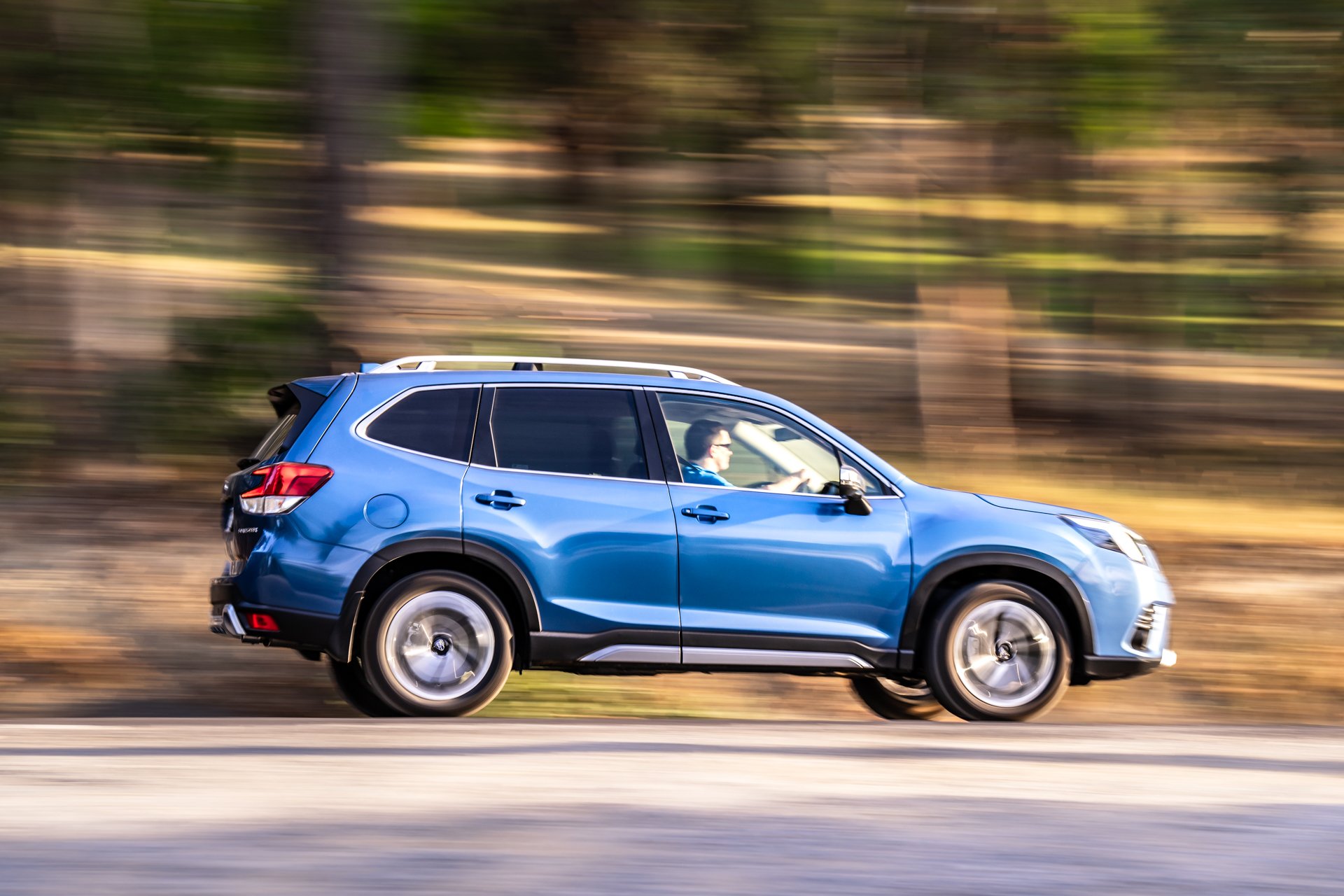
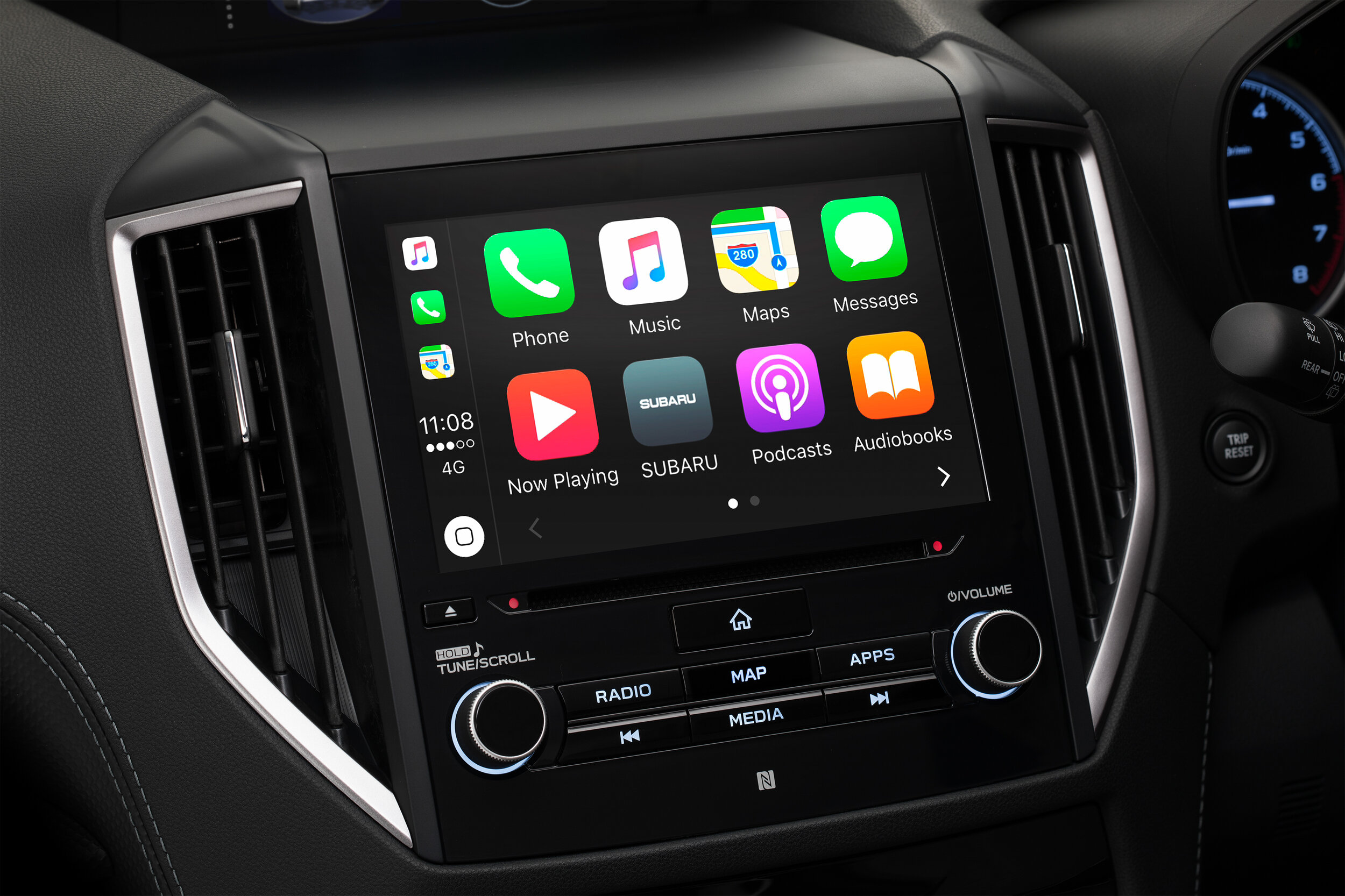
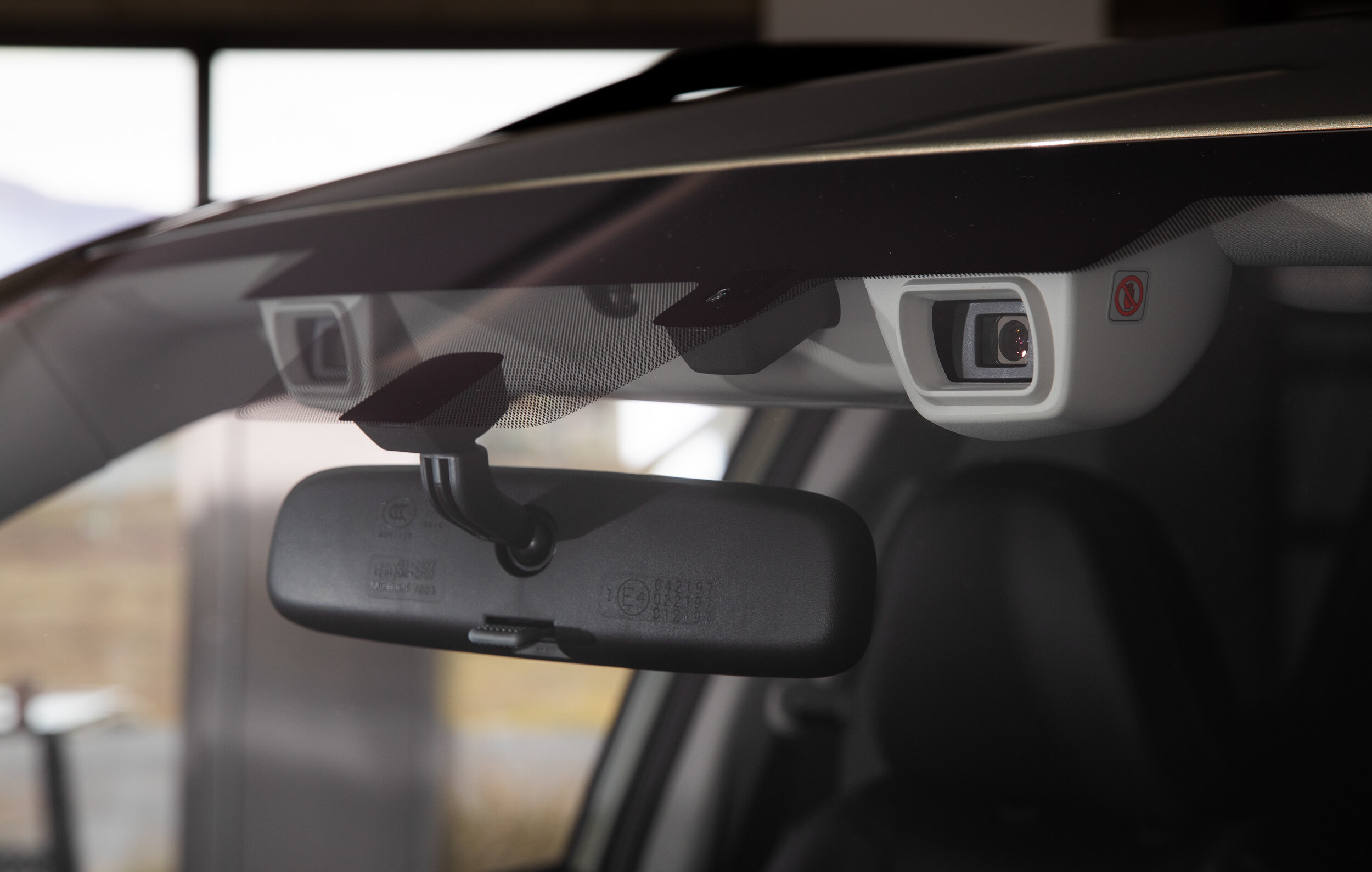
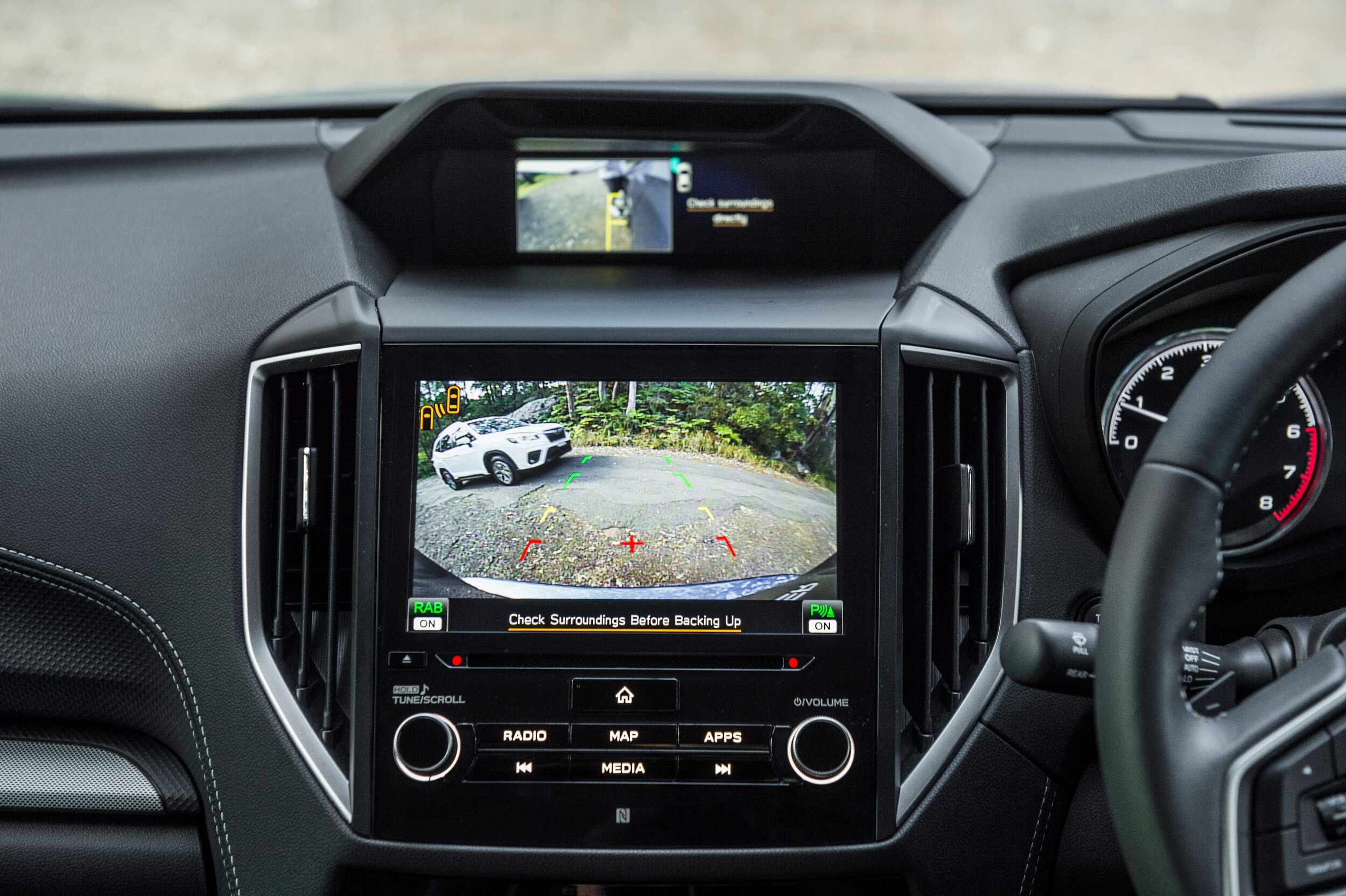
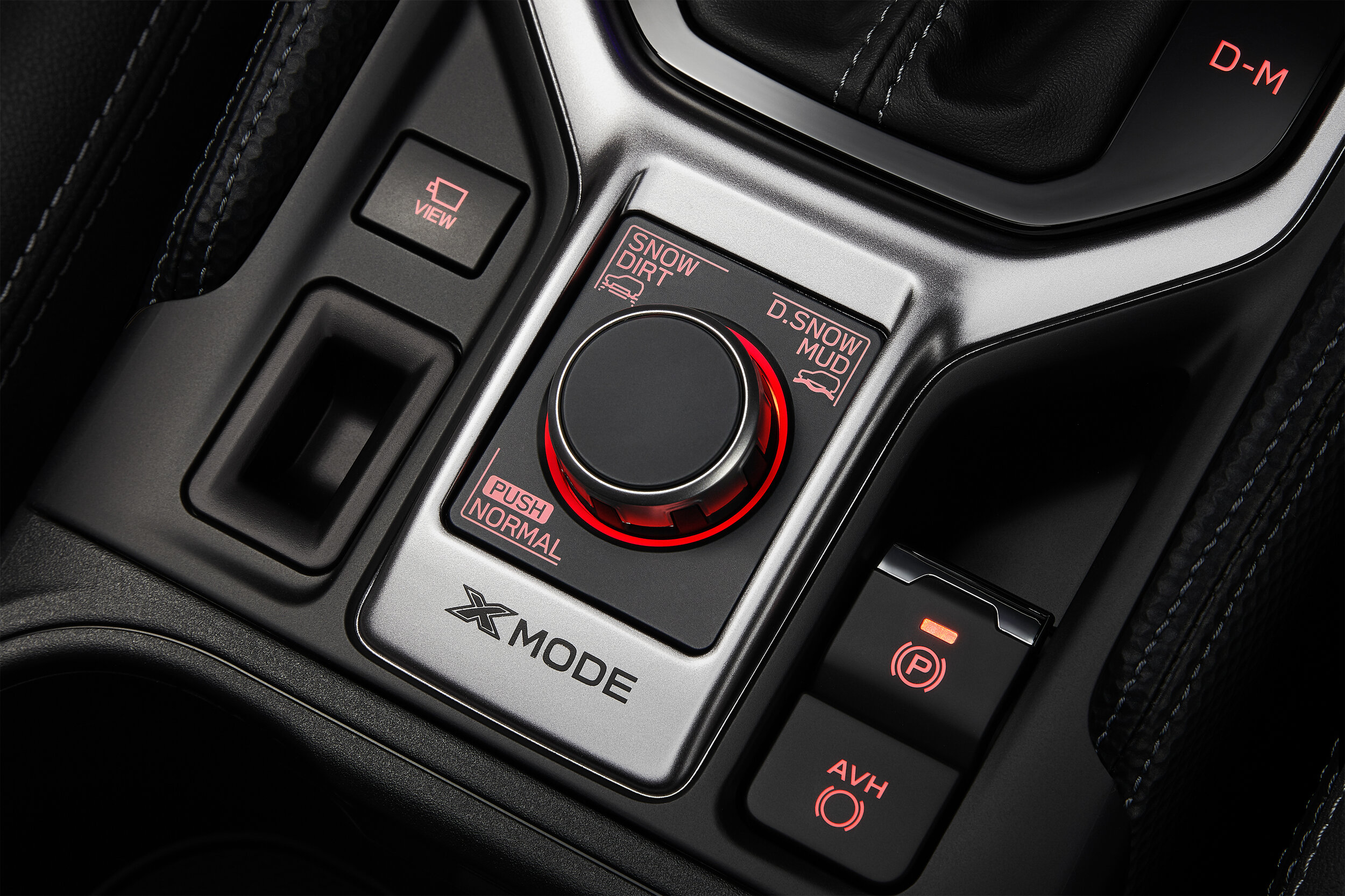
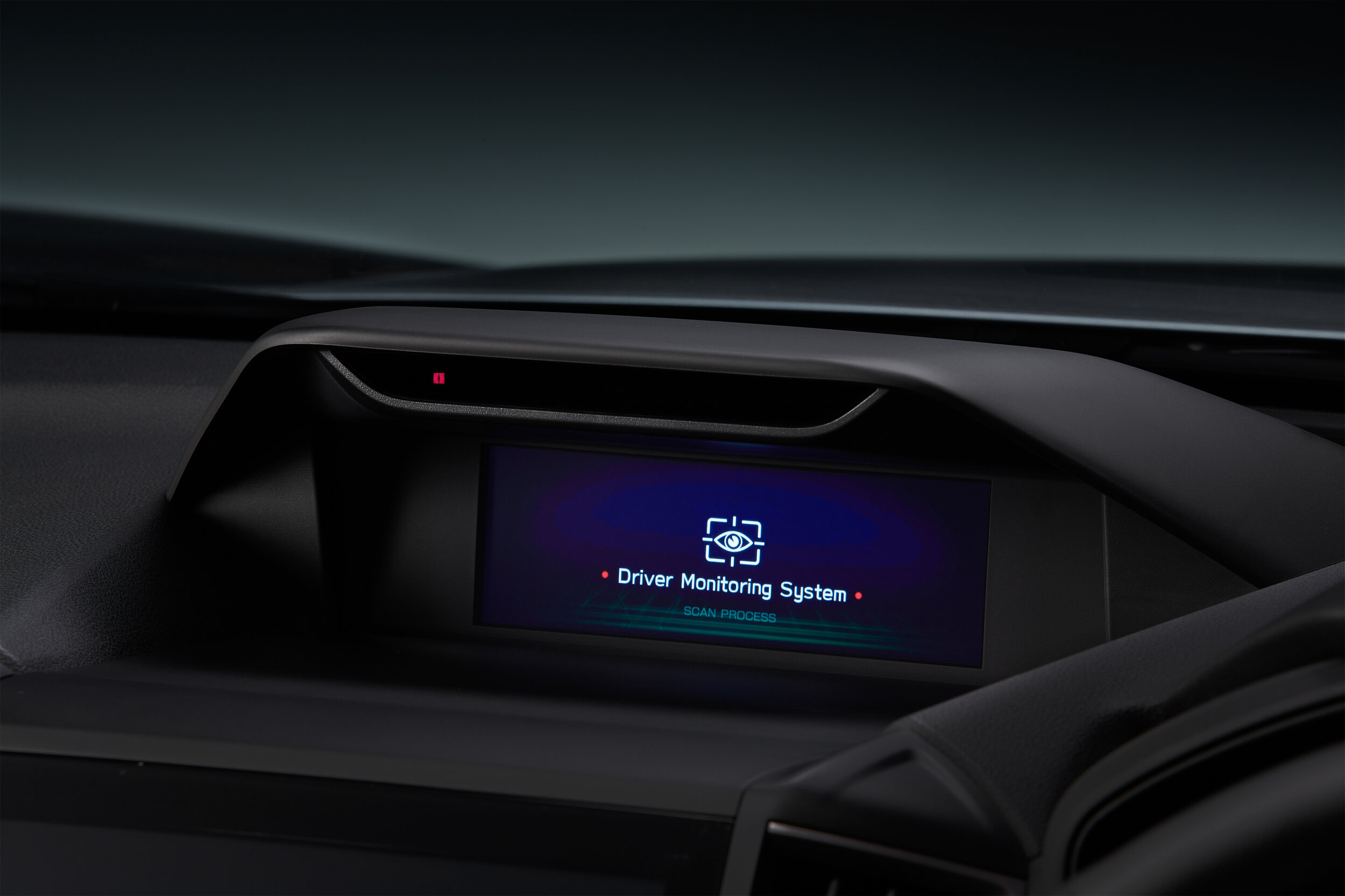
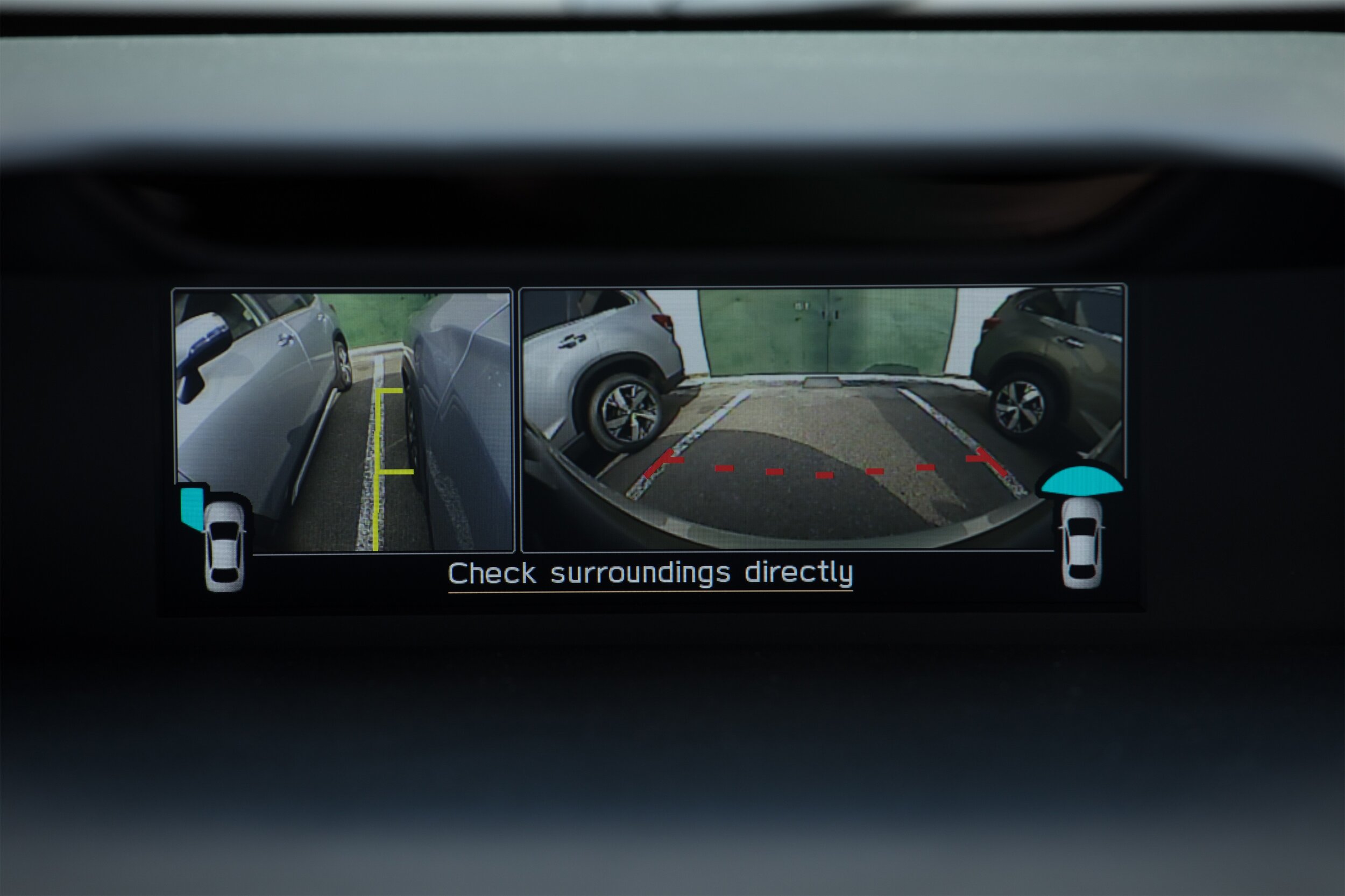


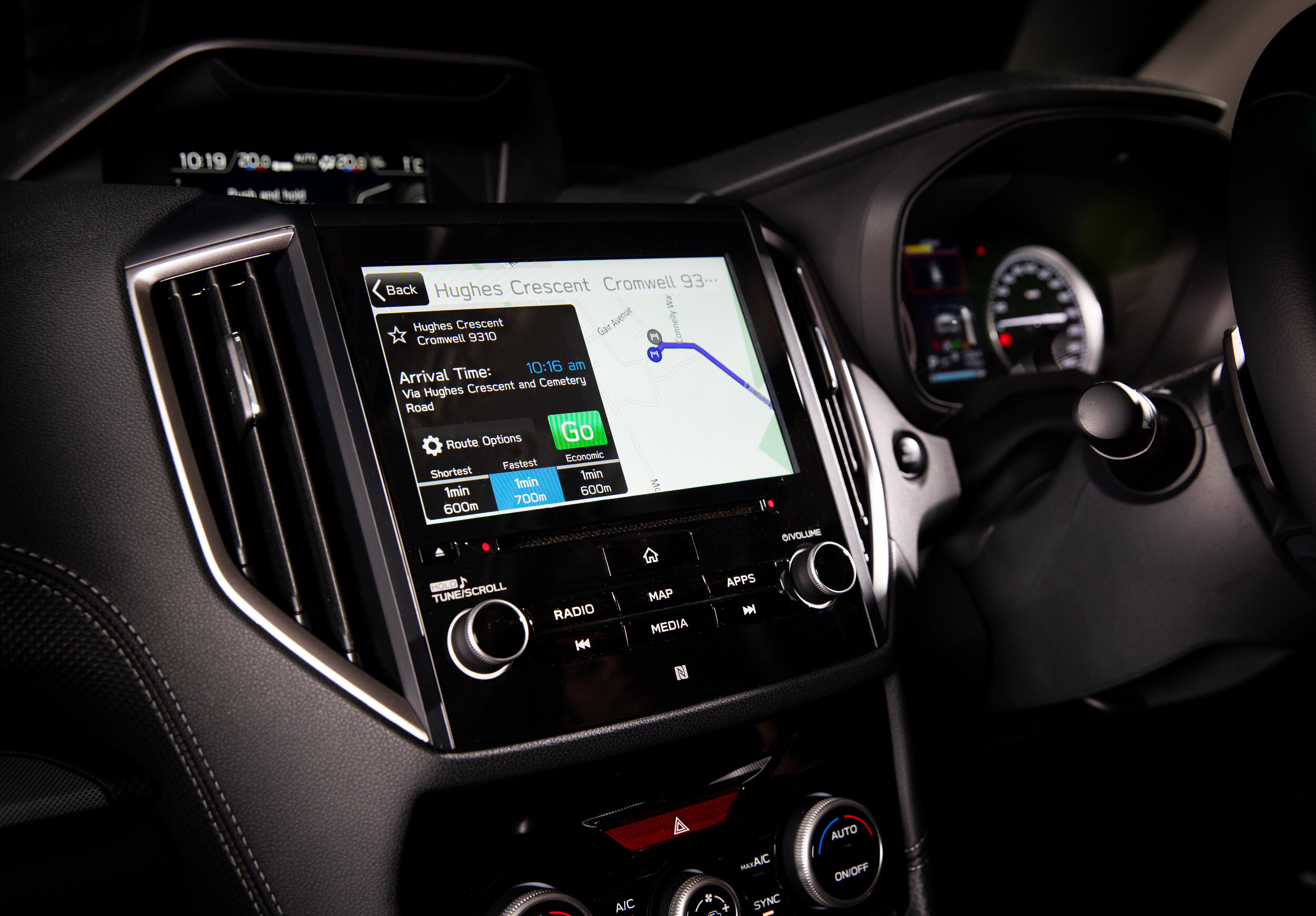
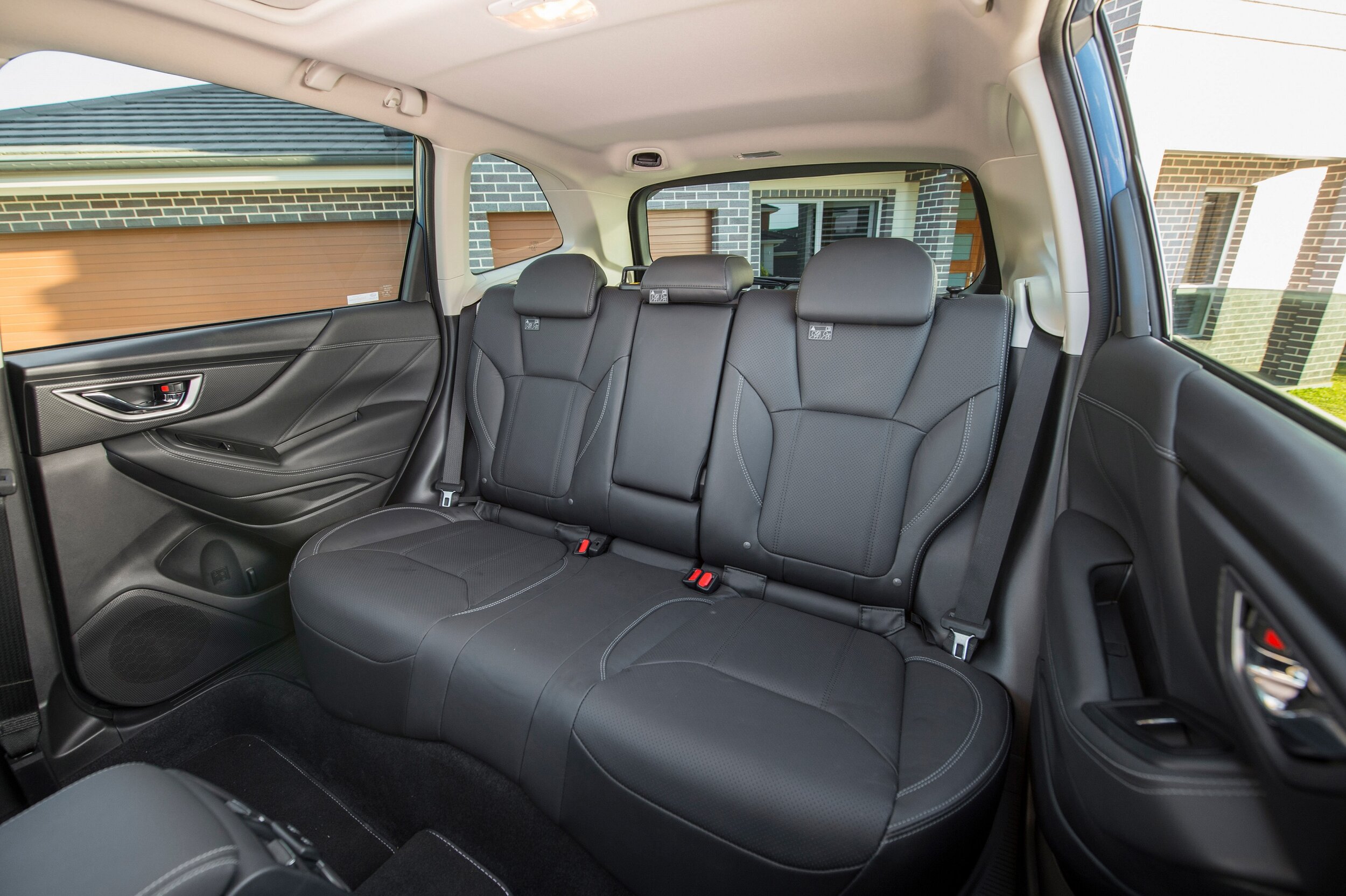
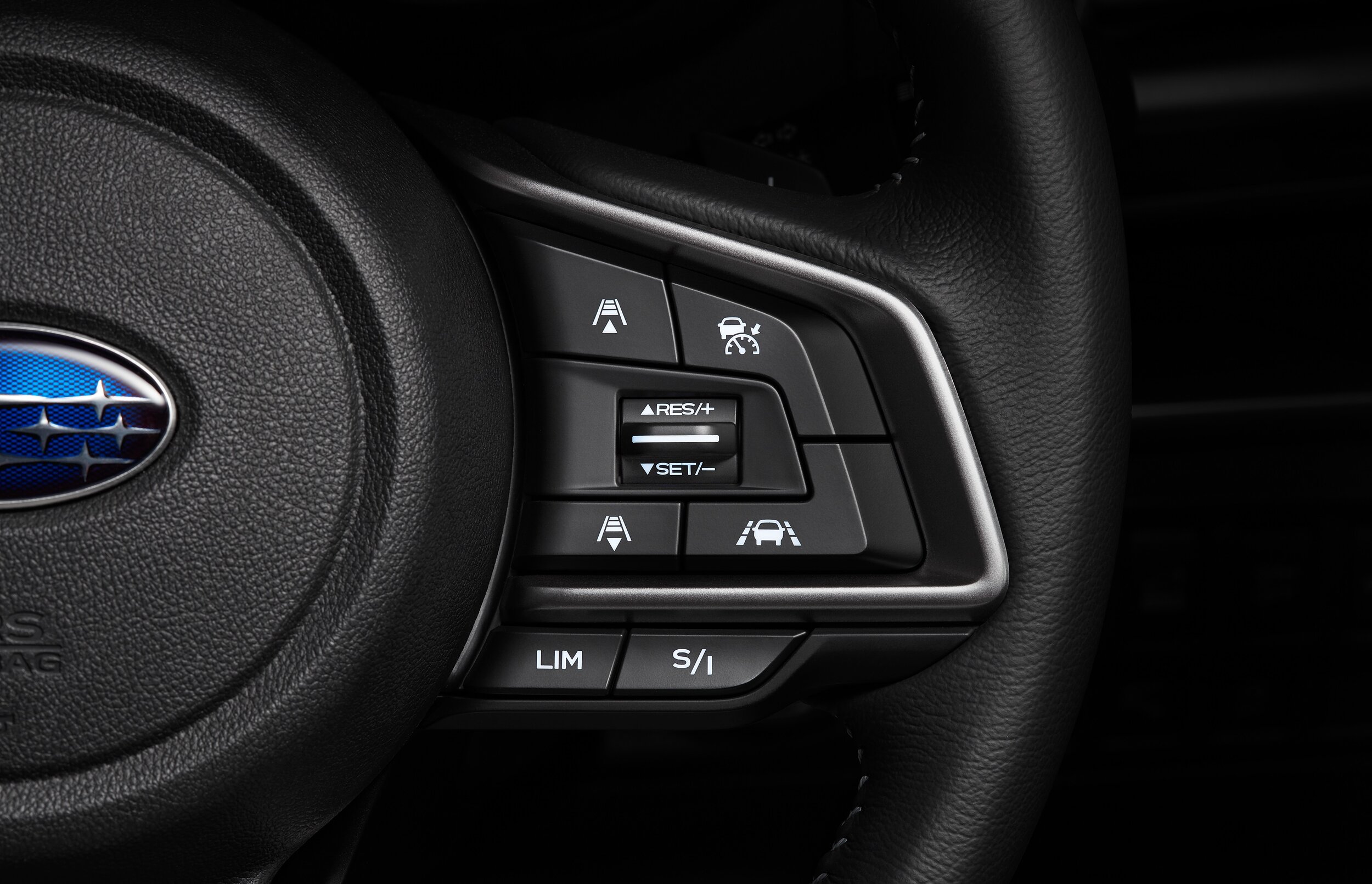





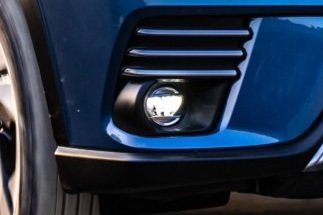
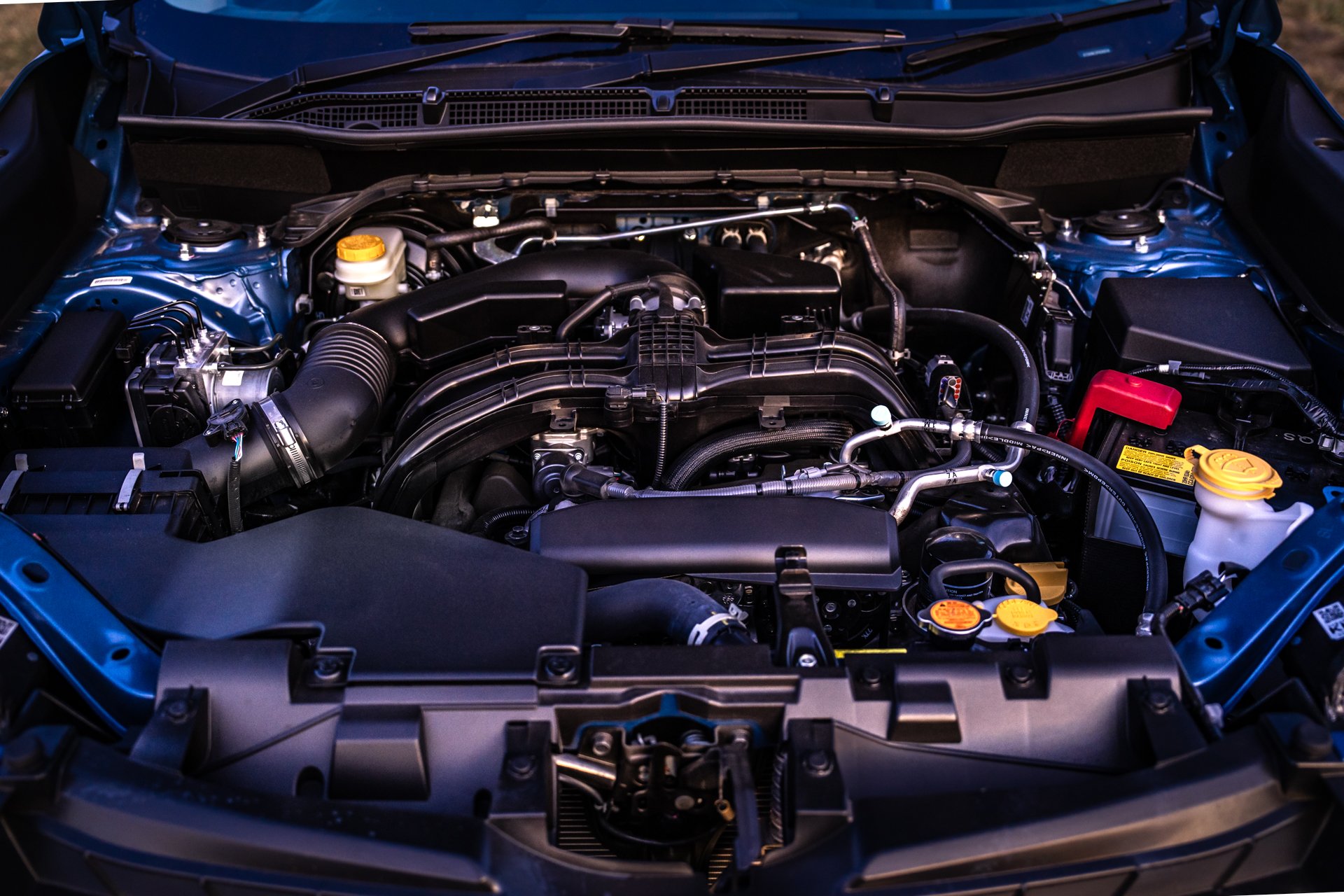
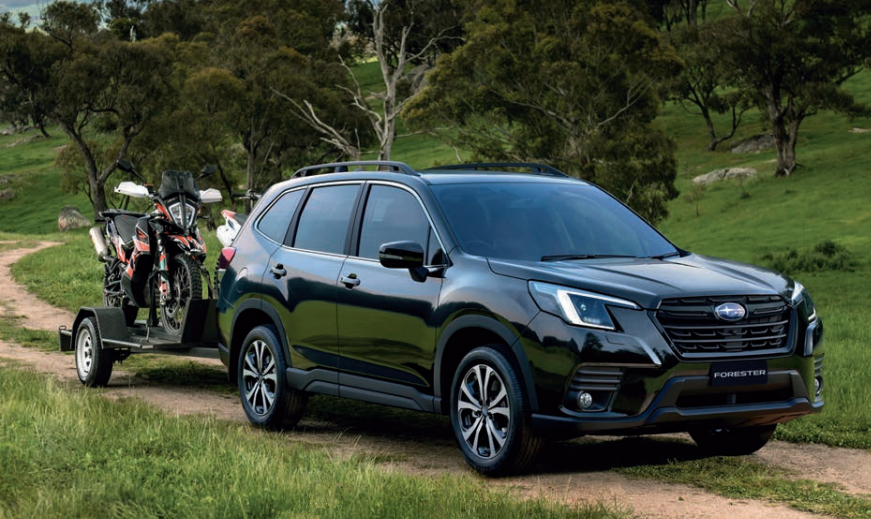
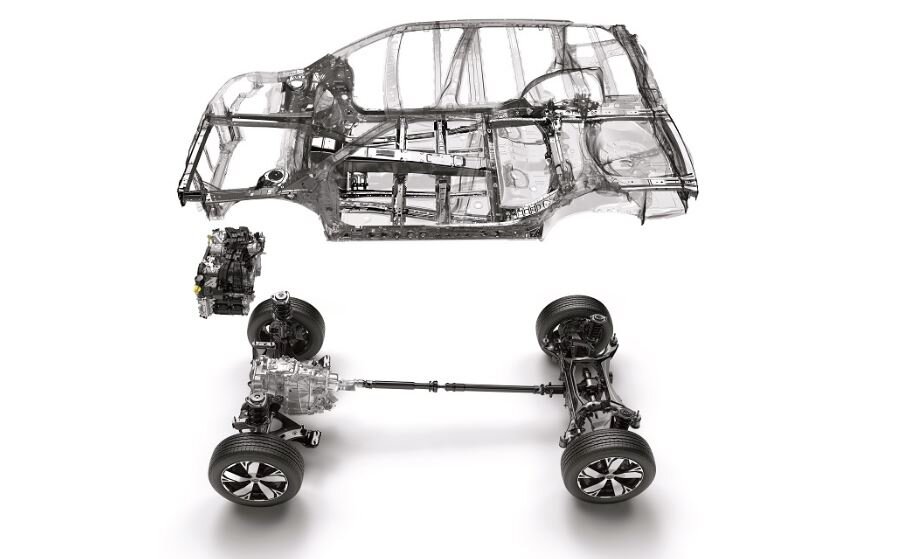


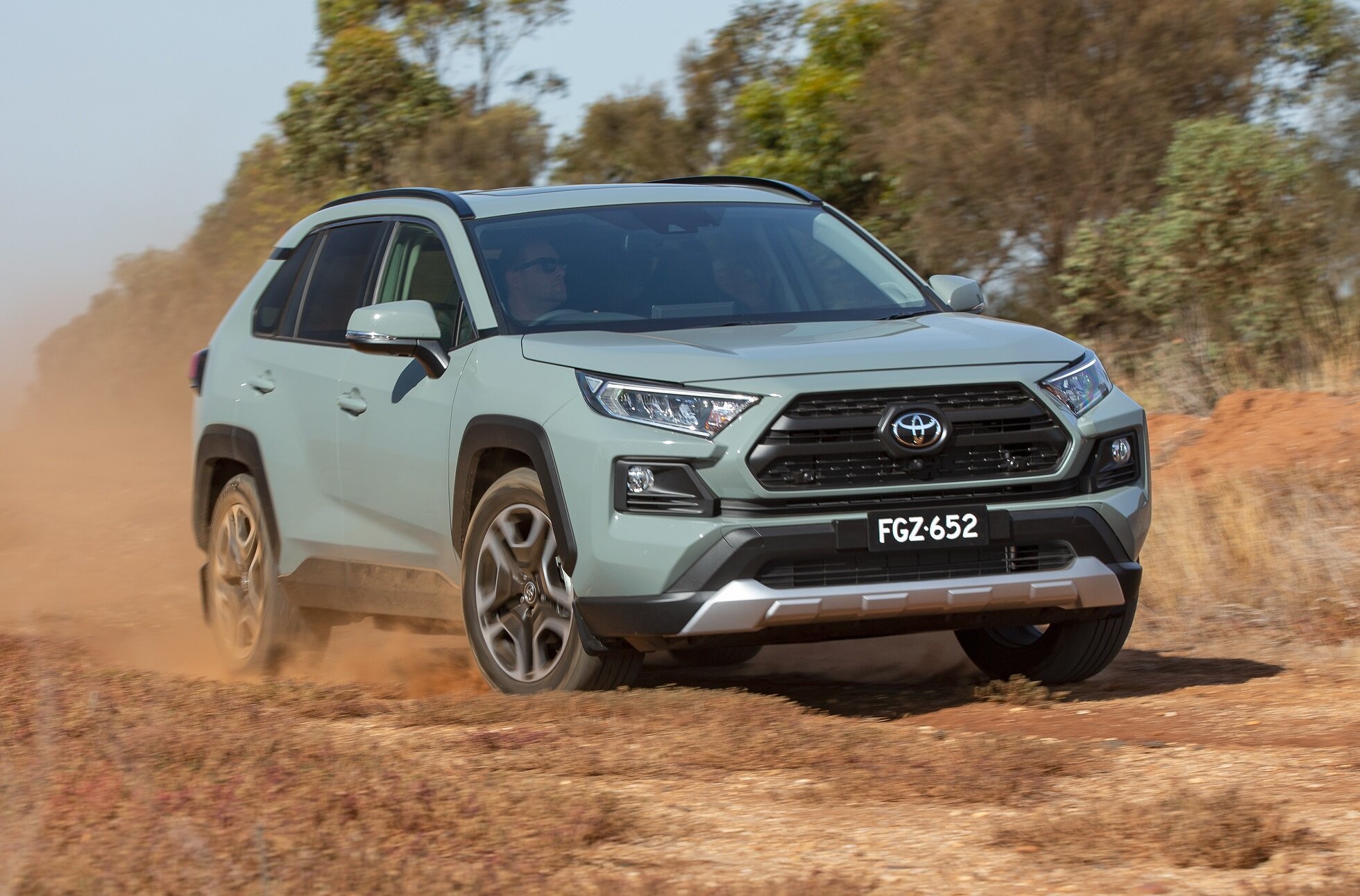
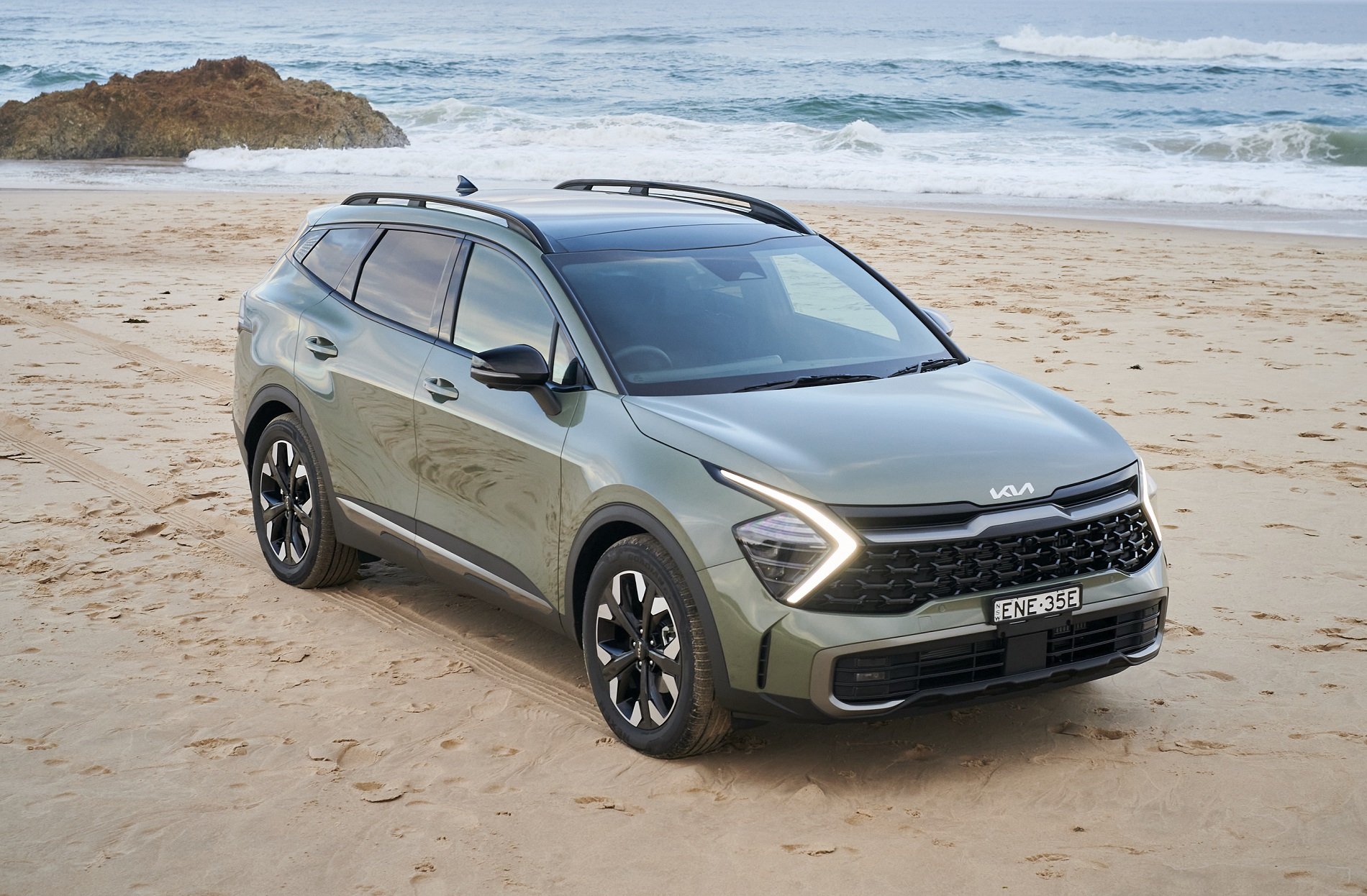



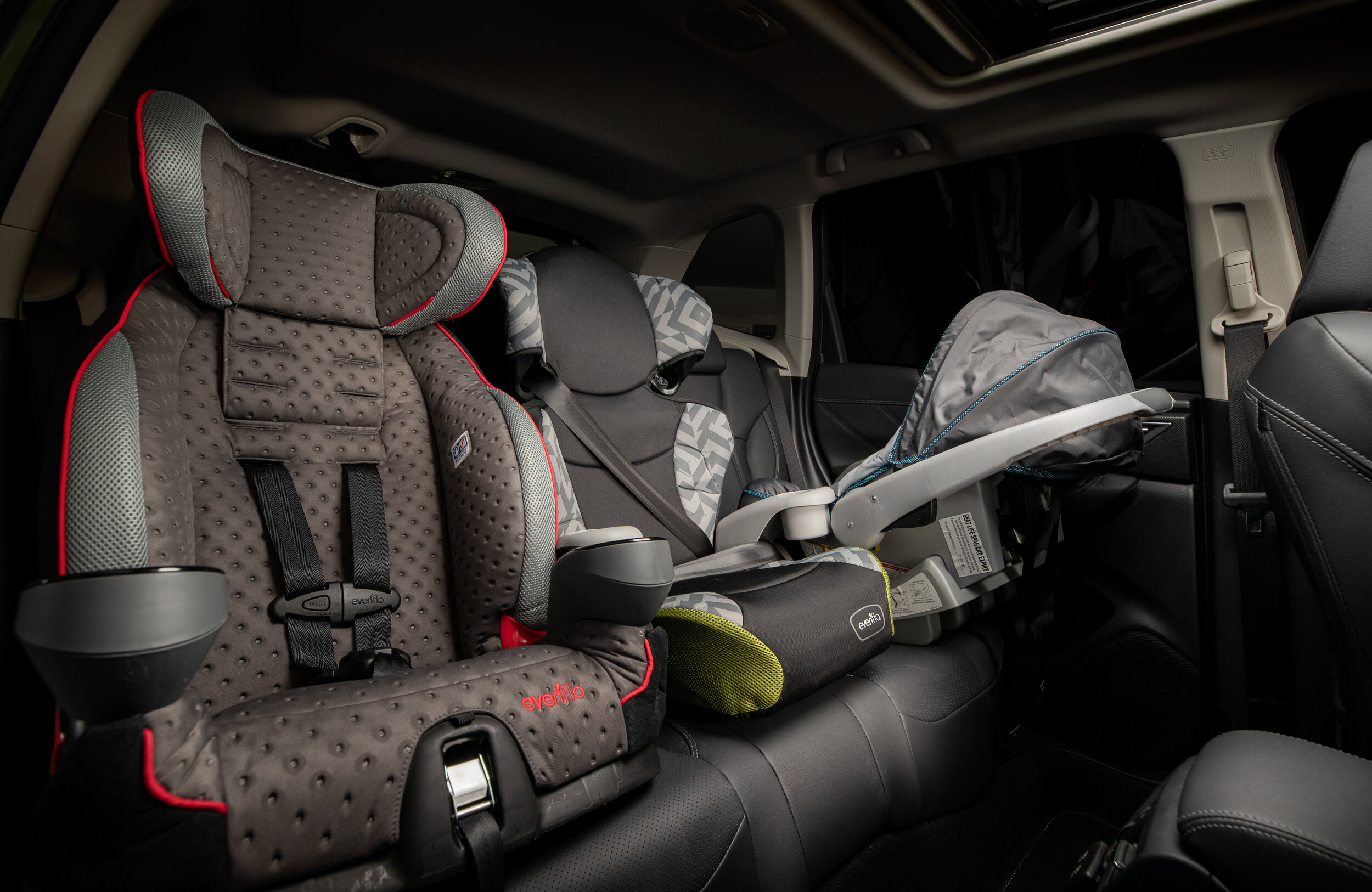








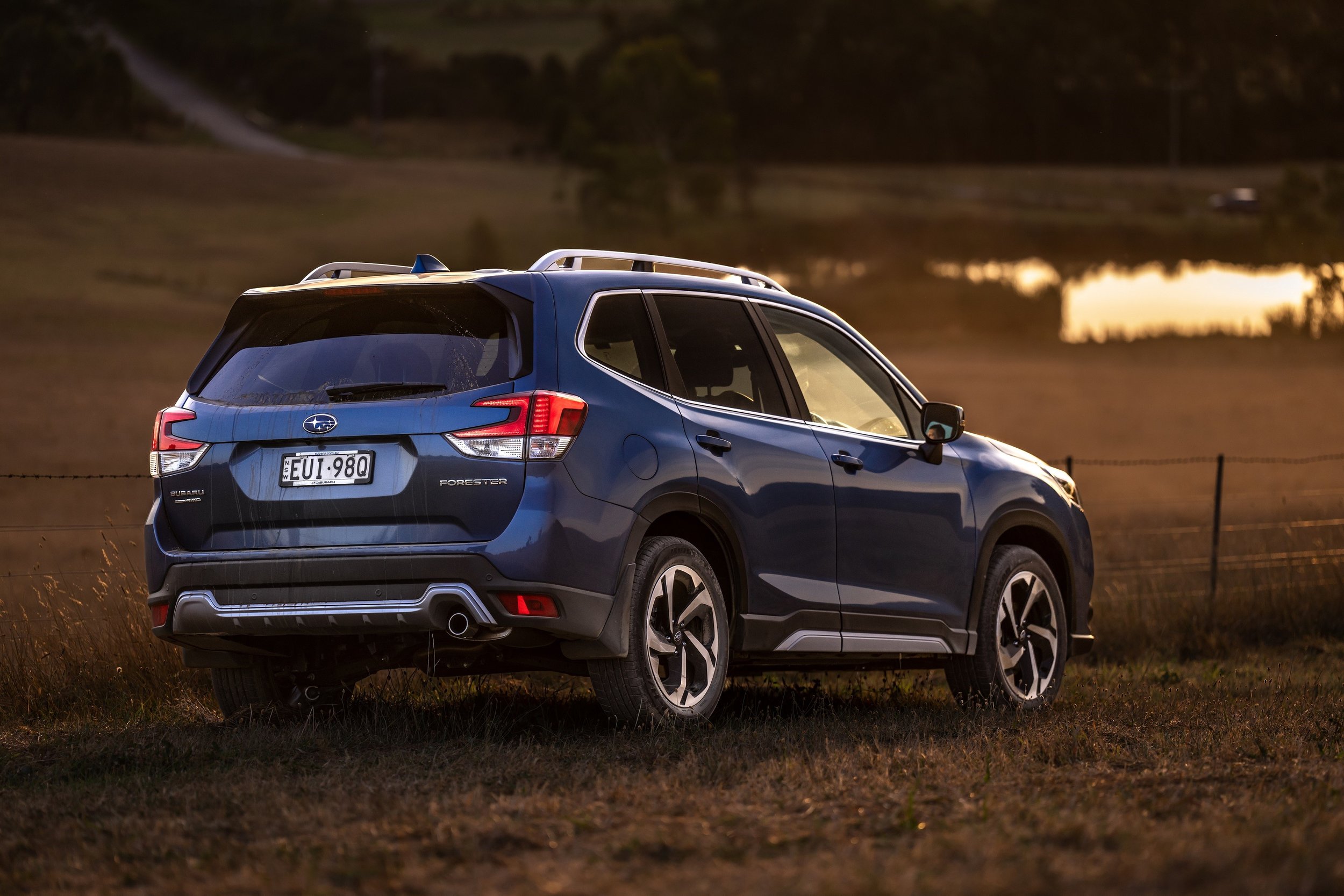







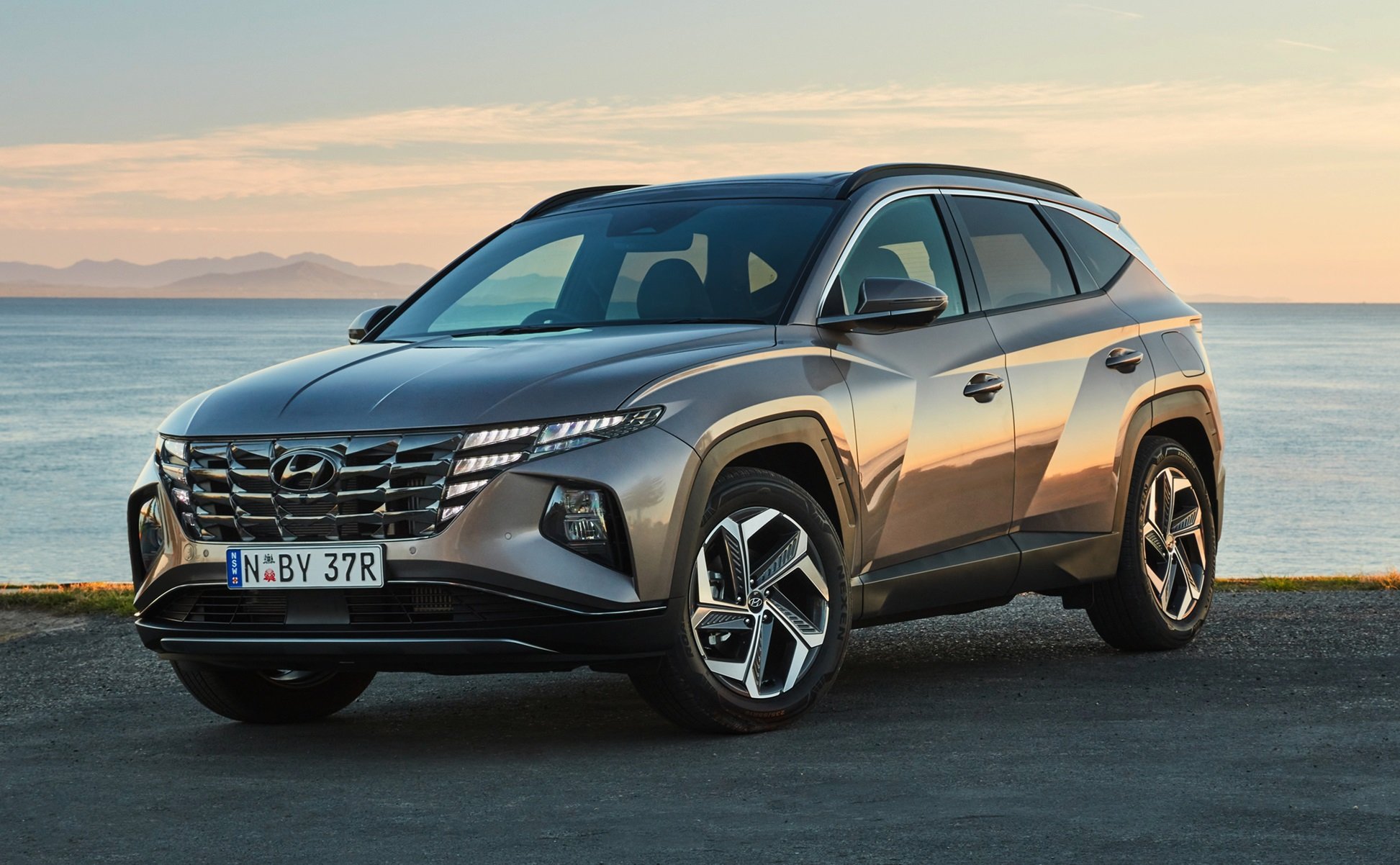



Shopping for a big seven-seat SUV or eight-seat people mover? Kia Carnival might be king of triplet transport, but the Hyundai Staria is built for massive families and small business…